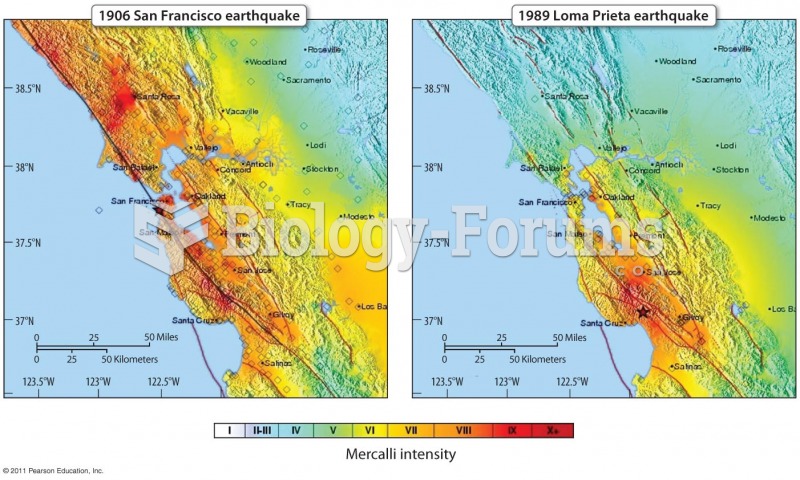|
|
|
In 1844, Charles Goodyear obtained the first patent for a rubber condom.
IgA antibodies protect body surfaces exposed to outside foreign substances. IgG antibodies are found in all body fluids. IgM antibodies are the first type of antibody made in response to an infection. IgE antibody levels are often high in people with allergies. IgD antibodies are found in tissues lining the abdomen and chest.
In the ancient and medieval periods, dysentery killed about ? of all babies before they reach 12 months of age. The disease was transferred through contaminated drinking water, because there was no way to adequately dispose of sewage, which contaminated the water.
Medication errors are three times higher among children and infants than with adults.
Egg cells are about the size of a grain of sand. They are formed inside of a female's ovaries before she is even born.







